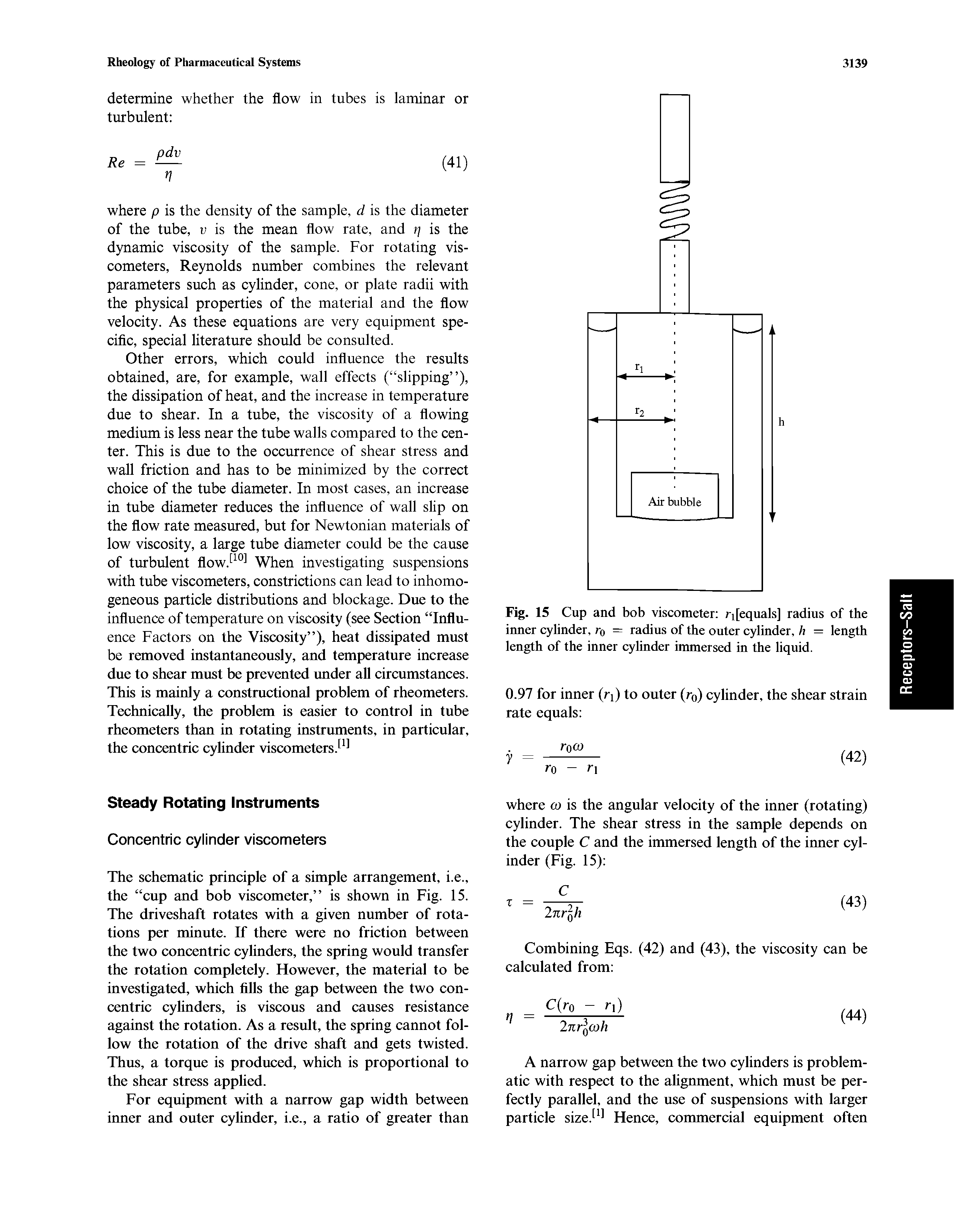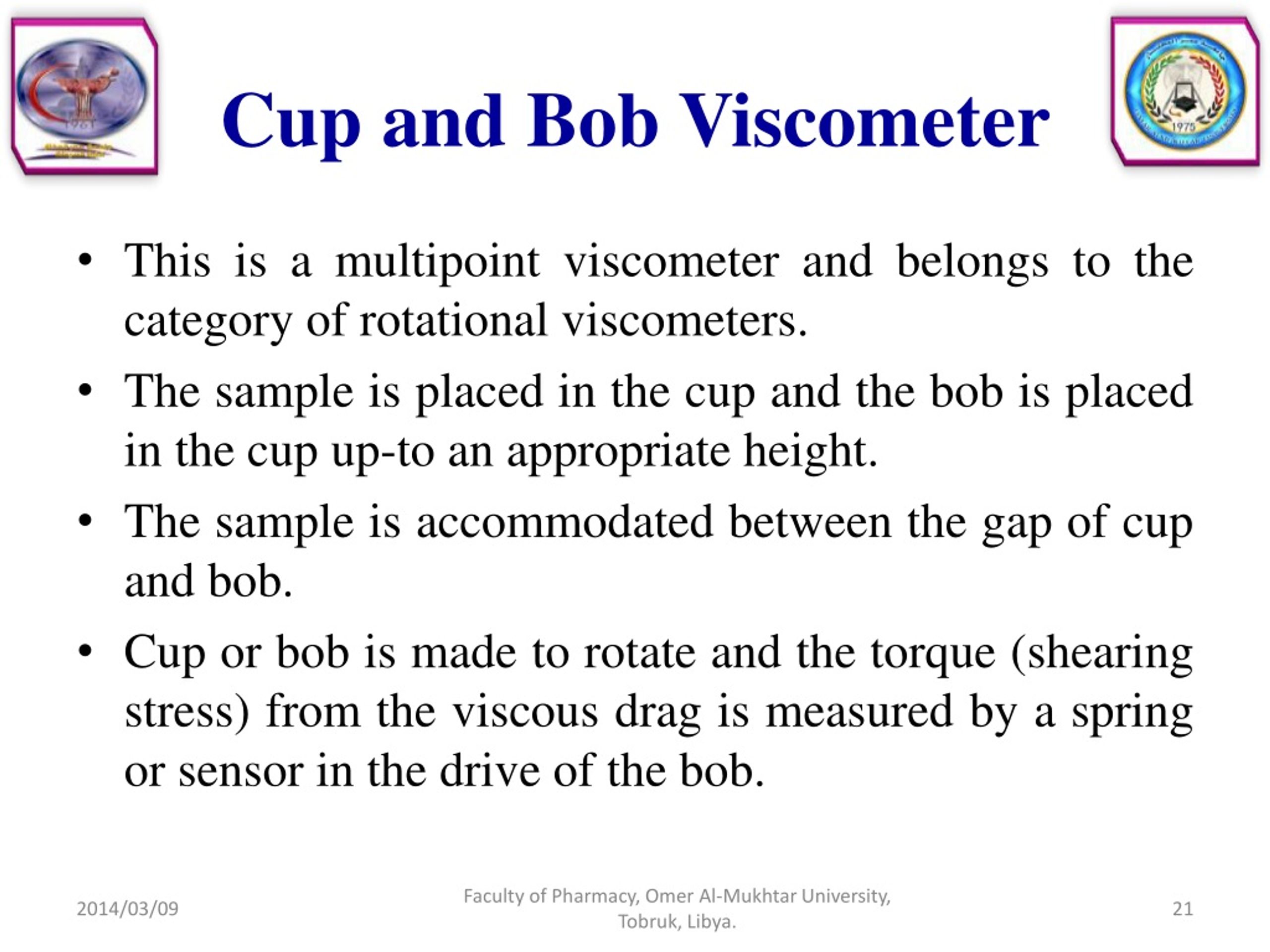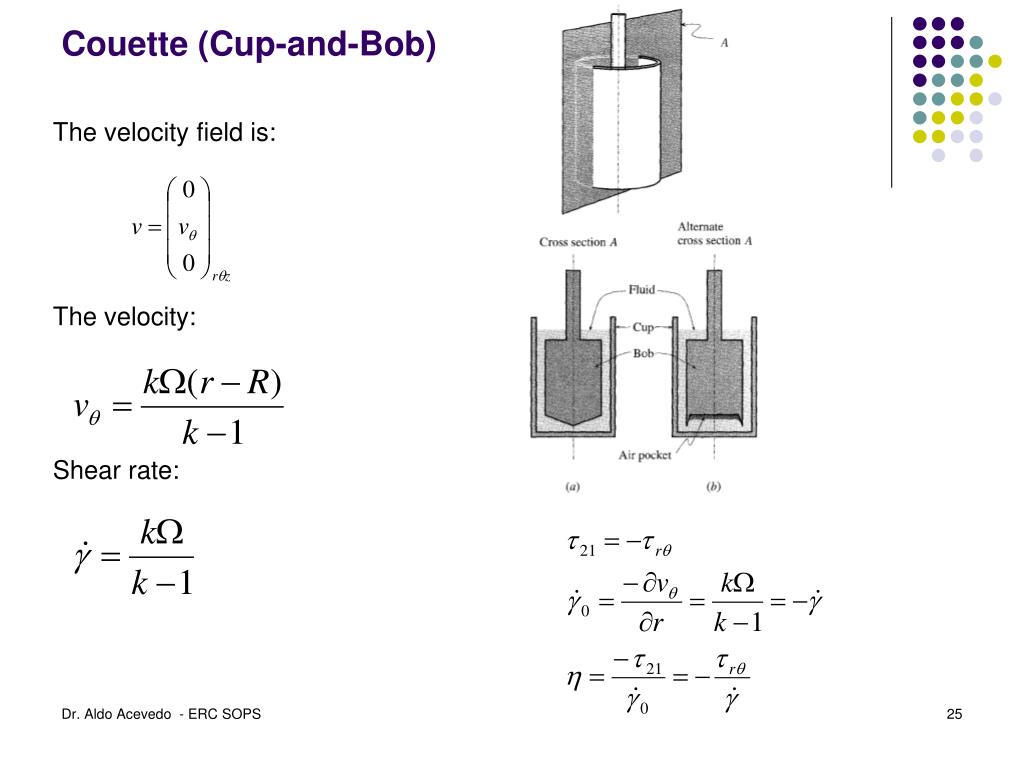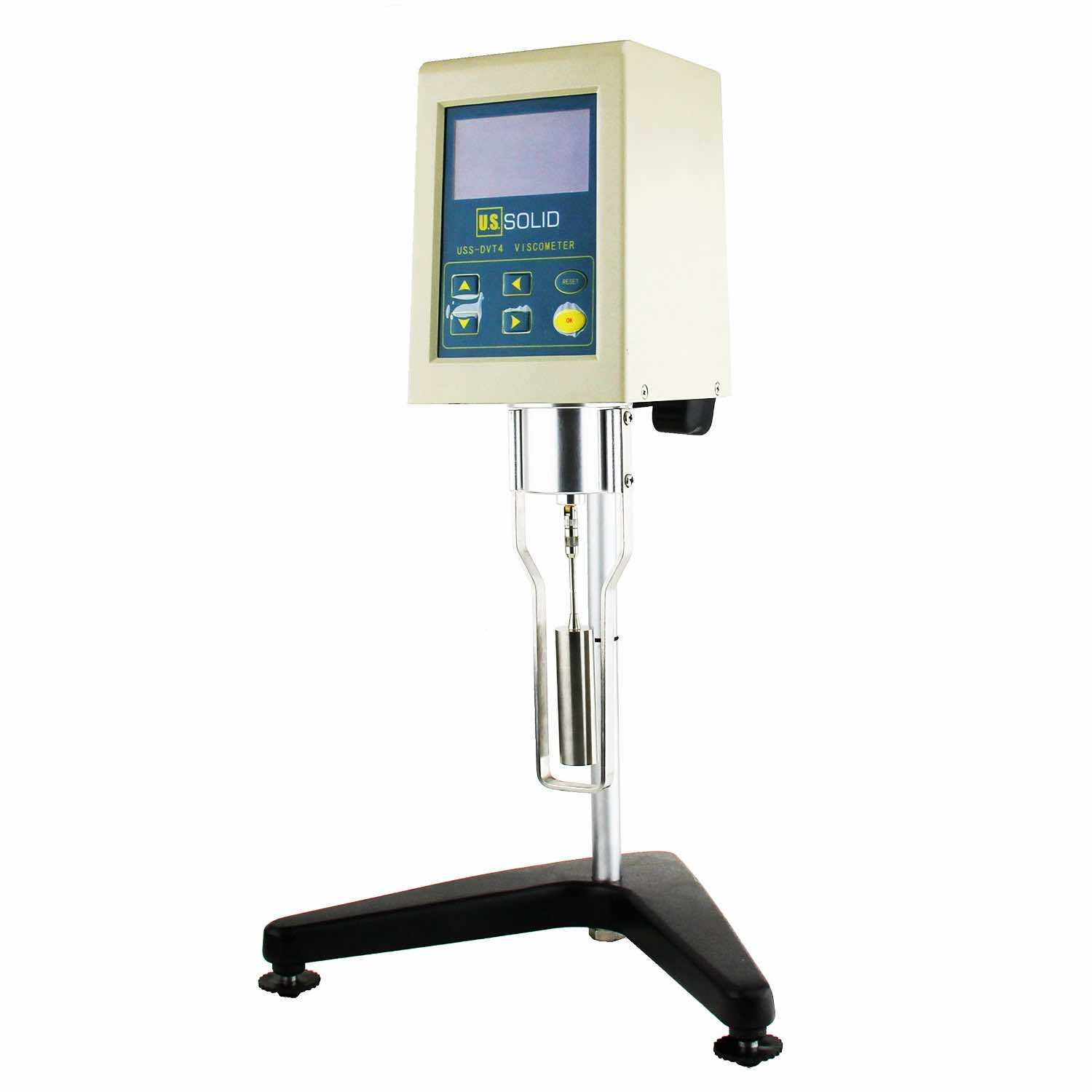
Asky Instruments 240 V Flow Cup For Laboratory at Rs 2200
Cup and Bob viscometer | working of cup and Bob viscometer Rheology physical pharmaceuticsCategory :- rotational viscometerIt used for non Newtonian fluidsBo.

Cup and Bob working of cup and Bob Rheology
Coaxial rotational viscometer: These are also known as concentric cylinder viscometers. A bob that has a circular cross-section is placed inside a cup containing the test liquid. Either the cup or bob is rotated and the drag of the liquid on the bob is measured by a torque sensor. They are suitable for Newtonian and non-Newtonian liquids.

cup and bob Big Chemical Encyclopedia
The cup and bob viscometer setup involves a cylindrical bob rotating inside a coaxial cylindrical cup with the test material placed in the annulus between the two. The measurement is the torque required to rotate the bob at an angular velocity and this data is related to the shear stress and shear rate. The shear-stress-shear-rate rheogram is.

PPT Rheology PowerPoint Presentation, free download ID9070540
Disadvantages Rotational Viscometer. It can be fairly pricey. Large and immovable in many cases. Types of Rotational Viscometer Couette type Rotational Viscometer "Rotating-cup" The cup is rotated while the bob is constant. The viscous drag on the bob produced by the liquid results in a torque which is proportional to the viscosity of the.

Cup and Bob physical pharmaceutics Physics, Bob, Cup
This paper describes a number of methods used to measure the viscosity of liquid metals, including capillary, oscillating vessel, rotational bob or crucible, oscillating plate, draining vessel,.

and its types with working principle & applications.
For all cases except where the gap between the cup & bob is very small, that is Rc/Rb > 0.95, we must correct for the flow field in the gap. When a more pseudoplastic fluid is tested, the shear rate in the gap. viscometers: Step #1, calculate the shear stress, on the bob using the equation for Newtonian fluids. Step #2, calculate the value.

Hightemperature oscillatingcup (1) Oscillating initiator
1of 19 Rotational viscometers •8 likes•6,093views Report Share Download NowDownload to read offline Education Rotational Viscometers, typers and sub-types, advantages,disadvantages,working of different rotational viscometers. 2.cone and plate viscometer, plug flow development, etc. Chapter: Rheology 4th semester B.Pharm.

PPT Rheometry PowerPoint Presentation, free download ID6859327
Viscosity is simply the shear stress divided by the shear rate! - Nothing more, nothing less. This example of force distribution is the last relation, above, and surprisingly enough, even high-end rheometers today compute viscosities by this simple relation. The Working Principle of Different Rheometer Types

Anton Paar Disposable Measuring system Cup D18 and bob CC12 for ViscoQC
Figure 1. Viscosity measuring ranges of available Ubbelohde capillaries over a wide viscosity range (logarithmic scale). Types of available glass capillaries Generally, gravimetric capillaries are made of glass. They are divided into direct-flow or reverse-flow models.

Elongated double gap cup and bob (Klein et al, 1990
Cup And Bob Viscometer Information: Catalog and Supplier Database for Engineering and Industrial Professionals. Products/Services for Cup And Bob Viscometer Viscometers - (181 companies) Viscometers define viscous properties of a fluid at ambient or defined temperatures.

Cupand Bob Couette Fluid Mechanics Beyond Discovery
A viscometer (also called viscosimeter) is an instrument used to measure the viscosity of a fluid. For liquids with viscosities which vary with flow conditions, an instrument called a rheometer is used. Viscometers only measure under one flow condition.

cup and Bob
Dynamic viscosity, also known as absolute viscosity, is a fluid's resistance to shear flow due to an applied external force. It describes the amount of internal resistance offered when one layer of the fluid moves over another layer in a horizontal plane. Dynamic viscosity is especially useful when describing non-Newtonian fluids. Advertisement

10 Best For Professionals
A viscometer (also called viscosimeter) is an instrument used to measure the viscosity of a fluid. For liquids with viscosities which vary with flow conditions, an instrument called a rheometer is used. Thus, a rheometer can be considered as a special type of viscometer. [1]

Flow Cup at best price in Ambala by Advanced Technocracy
Details Viscometer / Viscosity Meter Viscometer PCE-RVI 2 £ 1,156.00 Price excl. VAT &. delivery 2 year Warranty The viscometer has a measuring range of 15. 100,000 cP. With an accuracy of <±2% of the range, the viscometer is a precise measuring device to determine the viscosity of a sample liquid. - Measuring range: 15. 100,000 cP

Setup of a " cup and bob " rotational (1) cup, (2
As the name implies, the cup-and-bob viscometer consists of two concentric cylinders, the outer "cup" and the inner "bob," with the test fluid in the annular gap (see Fig. 3-2). One cylinder (preferably the cup) is rotated at a fixed angular velocity (Q).

Elongated double gap cup and bob (Klein et al, 1990
We systematize and review the mathematical models for use in oscillating-cup viscometry to solve different problems: for analysis of fluid flow and viscometer oscillations, for estimation of rheological constants and density, and for study without taking into account the traditional assumptions of this method. The full model for the cup and bob viscometer and a model for the oscillating-plate.